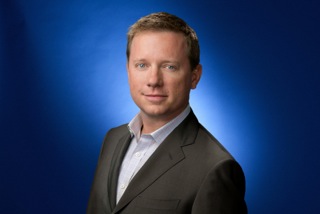
Jason Kelly has been around a few blocks – and we mean that in the nicest way possible. Following his ascent to the role of CEO for the globally expanding buying platform Sociomantic, we caught up with him to talk about his journeys to just about every corner of the digital ad industry, get the scoop on fast-growing Sociomantic and seek advice for ops professionals working their way up in the ecosystem.
What in particular intrigued you about Sociomantic? Why do you think they saw you as such an interesting candidate?
Having worked on the sell-side at both Admeld and Google, I saw Sociomantic become a top buyer and simultaneously learned more about their business. The more I saw, the more it became very clear that Sociomantic had an extremely unique approach to performance display buying, from the technology to the way they were able to integrate their platform on behalf of ecommerce advertisers.
Overall though, what inspired me most about this opportunity were the people who are building Sociomantic from the ground up. The three founders and the current team have built a global company that now serves 45 markets, and they did so in a little more than three years, with no outside funding.
As for what they saw in me, I think it was a combination of familiarity with the real-time bidding sector and the ability to fit naturally into the company environment they’ve built. I’m a big advocate of driving the business through hard work and service, and I’m happy to be part of a team that feels the same away.
 You’re taking the role of CEO at an international organization breaking into the U.S. – what challenges do you expect?
You’re taking the role of CEO at an international organization breaking into the U.S. – what challenges do you expect?
We face the same challenge that all DSPs and automated buying platforms face now – primarily, convincing advertisers to use more efficient and effective models for buying their online media. The international reach will likely work to our advantage as well. Display advertisers now understand that online shoppers aren’t confined to their home countries, and they need to market to a global audience. Our existing international infrastructure is a huge asset for brands looking to extend campaigns all over the world.
Sociomantic has also recently opened offices in Brazil and Russia. Can you share any thoughts on those markets and the overall Sociomantic global agenda?
As I said before, Sociomantic’s international scale is a huge asset. Sociomantic got its start in Germany, and while we benefit from German engineering and design in our technology, the original goal of the founders was to build a global company from day one, and today we have 22 different nationalities represented across our team. This diversity is a tremendous advantage as we seek to localize our focus and efforts on a region by region basis as we service our clients.
To that end, we see ourselves as a global company, and as CEO, I’m going to work closely with the founders in addition to relying on our local MDs and teams operating within each of our 45 regions to share their depth of knowledge and expertise so that we can overcome potential multi-national related challenges. Our new offices in Moscow and São Paulo will contribute more experience and findings from new markets, which will fuel our growth and performance capabilities for eCommerce advertisers around the world.
So in the last four years, you’ve moved from publisher to SSP and now to a DSP – how do you view your career trajectory? Does it surprise you?
I have long been a fan of the adage “a picture is worth a thousand words,” and I think the IAB Data Ecosystem illustration does a great job of highlighting my career progression as you referenced in your question.
Going back to working at Time Inc. as a publisher, then moving to Admeld as an SSP and ultimately becoming part of Google, you can see this logical progression of moving from right to left, moving closer and closer to working directly with demand-side partners including advertisers and agencies.
At the end of the day, we are focused on buyers and their respective goals, in terms of driving revenue in a transparent manner while simultaneously delivering the highest yields to publishers in return for their display inventory. My previous experience working across all buyers in our ecosystem has resulted in a unique and valuable perspective about how to best accomplish those needs.
As the former Vice President of Digital Strategy and Revenue Management at Time Digital, it’s pretty obvious ya got some ops in ya. What advice do you give to people with similar backgrounds looking to further their careers – maybe even end up in the CEO’s seat like you?
The industry is constantly reshaping, and taking a chance on an emerging technology is a great way to get in on the ground floor and gain firsthand knowledge. Being successful in this or any role is directly tied to understanding as much of the online ecosystem as possible, so that you can further enable a business to fill a void in the marketplace. In sports, the best players understand how to play every position, so they can anticipate the movements of their teammates and opponents. The same goes for the business world.
I’d advise all of the ops people out there to not confine themselves strictly to the ops space, but to learn as much as they can about the buy-side and the issues advertisers face. When you’re able to grasp the needs of multiple parties, you’ll be better suited for leading a business that benefits all the parties: buyers, sellers, and consumers.
https://www.admonsters.com/sites/default/files/Jason%20Kelly%20sociomantic.jpeg